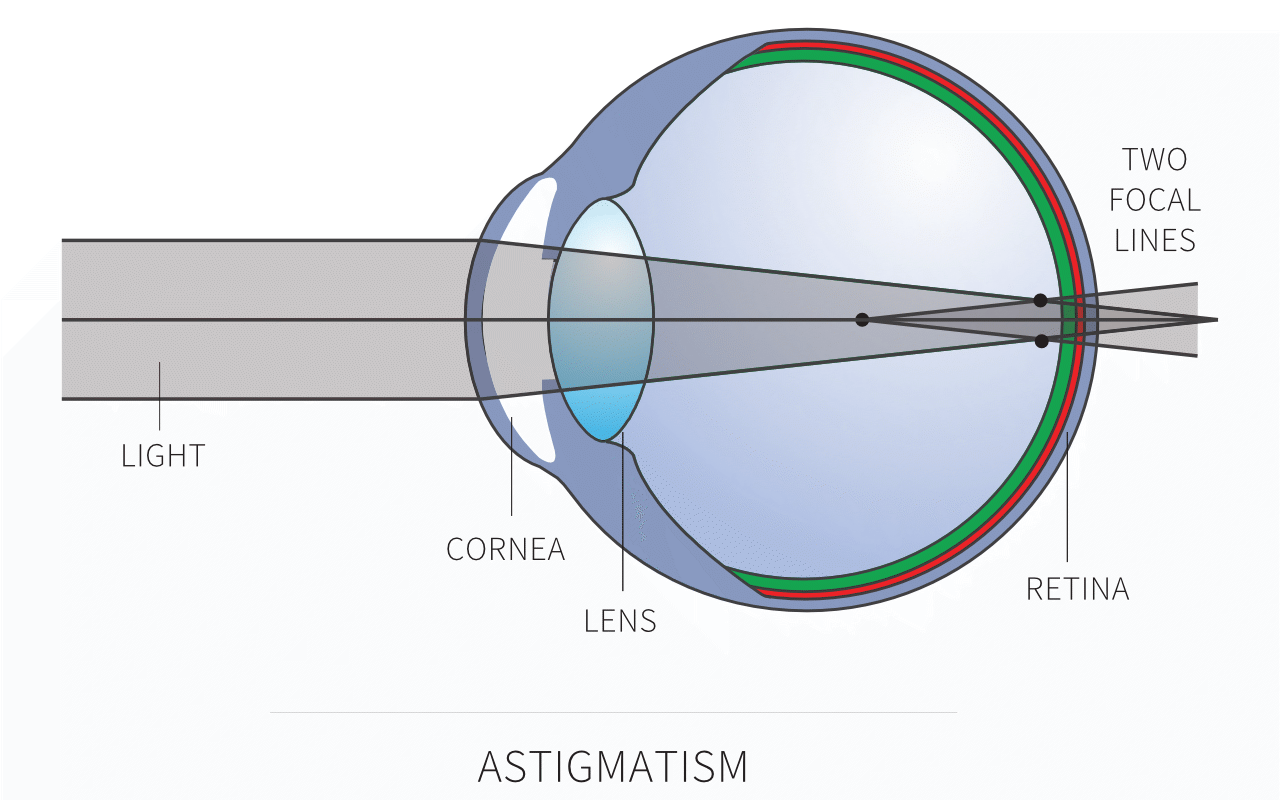020 7490 7222 Book an appointment
The term ‘astigmatism’ often worries patients because of its complicated name, but it isn’t as scary as it sounds! It is, in fact, a very common type of refractive error, but in general, only 1 in 4 people with moderate to high levels need treatment.
Astigmatism occurs when the clear window at the front of the eye (cornea) or the lens inside the eye is shaped more like the surface of a rugby ball or back of a spoon, than a round football. This means that some of the light passing through the eye bends more than the rest, focusing two points at the back of the eye instead of one. If we use our archery analogy, imagine two arrows being shot from the same bow with both missing the target (the light-sensitive, retinal layer at the back of the eye).
Astigmatism frequently occurs in combination with short- or long-sightedness, making your spectacle prescription even more complicated to understand as it now has three numbers! For example, a prescription may be written as -3.00/ -1.00 x 100.

Short-sightedness can run in families so you’re more likely to develop it if one or both of your parents are short-sighted. It has also been linked with doing excessive close work for long periods (e.g. reading) and a lack of time spent outdoors during the childhood development years.
The specific cause of astigmatism is unknown. It can run in families so you’re more likely to develop it if one or both of your parents have the condition.
Astigmatism effectively misshapes or distorts the vision by blurring it more in one direction than another. It’s similar to looking at a funhouse mirror where some parts of the image are stretched while others appear squashed. In general, a person with astigmatism and short-sightedness will have more difficulty seeing things far away (e.g. watching TV), while someone with astigmatism and long-sightedness is more affected by close-up details (e.g. reading). If a person with astigmatism were to look at the spokes of a bicycle wheel, for example, some of them would appear in focus but others (at right angles) would be more blurred because lines at a certain angle might be more in focus on the retina at the back of the eye.
To test for astigmatism you will need to book a consultation at our clinic. This diagram is a simple (but by no means diagnostic) test – if all lines look the same or nearly the same, then you may not need an astigmatism correction.
Astigmatism correction creates a clear image by combining and focusing light rays on a single point at the back of the eye (retina). This can be achieved using spectacles, contact lenses (you may need specially-shaped, ‘toric’ lenses) or refractive surgery (laser, lens implant or other). Keep in mind that mild astigmatism may not affect vision or require treatment.
The first pair of spectacles are believed to have been made around 1290 in Northern Italy. From thereon, inventors explored the correction of short-sightedness, long-sightedness and even the additional need for reading spectacles. However, the first lenses specially designed to correct astigmatism were developed much later in the 19th century by an English astronomer called George Airy.